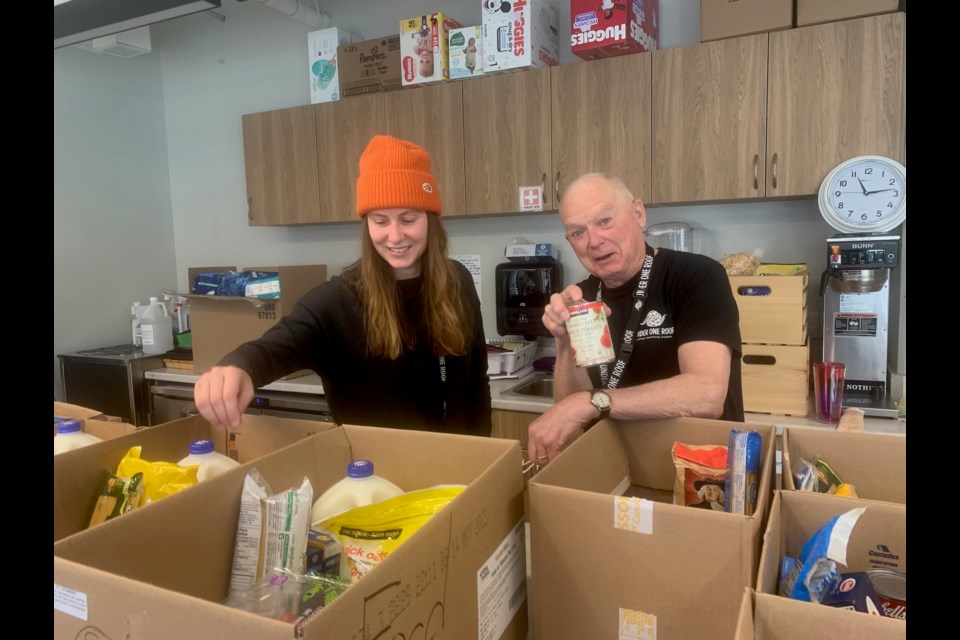GivingTuesday, Nov. 29, is just around the corner, and folks behind the food bank are hoping one of the donations locals make helps fill their shelves and fellow residents' stomachs.
GivingTuesday is a global movement started in 2013 when people are encouraged to give back to their communities in whatever ways they can.
At the food bank
It is a Friday morning, and volunteer Peter Hart is loading about 10 hampers with food to be delivered to local families that afternoon. The dry goods are ready to go, and now he awaits the food rescue van carrying fresh items like bread and lettuce.
These days, more people are heading to The Market (Squamish Food Bank), where Hart volunteers.
With the high cost of rent and food, more folks are struggling to make ends meet.
From January 2021 to October 2022, the Market saw almost 25,000 visits.
Over 2,500 food hampers were delivered.
The food bank receives items through a food rescue program. Six days a week, local stores and businesses donate perishable items that would otherwise go to waste.
The food bank diverted about 279,186 kilograms (615,500 pounds) of food from the landfill with this food rescue program, according to Abigail Watson, the food bank's client co-ordinator. What it can't use from that program goes to local farmers.
Though the food bank receives donations from various sources — including its food rescue program, food drives such as the Thanksgiving drive and Christmas in July, and business and individual donations — it often has to buy food to the tune of up to $8,000 per month to meet the need.
The organization distributes food to fill locals through The Market (which is currently open Tuesday, Thursday, and Saturday), kitchen meals at Under One Roof, its school lunches program, youth and community hampers.
This year's food bank usage represents a 15% increase over March of 2021, and a 35% increase compared to 2019.
"Overall, food bank visits have skyrocketed since 2019," reads a food bank report provided to The Squamish Chief.
What is challenging for individuals is also a challenge for the food bank.
The cost of food is at a 41-year high.
Food prices have increased in B.C. by almost 11% over last year.
Data collected last summer by the food bank shows that 26% of those accessing the food bank were aged 20 to 29.
The second highest age group was between 30 to 39, which made up about 20% of clients.
While across Canada, 20% of those who access food banks are children, in Squamish, that figure is 25% of users.
About 65% of food bank users in Squamish are single.
This is significantly higher than represented in the Food Bank Canada 2022 Hunger Report, which found 45% of users were single.
Almost 65% of food bank users surveyed lived in some type of rental accommodation. Almost 20% lived in a vehicle or were camping. Almost 10% had no fixed address.
About 30% of users had been in Squamish for over 10 years; 8% had been in town for five to 10 years; 9% had been here for three to five years; 16% had been here for less than a month.
Squamish is unique compared to other communities due to the high cost of rent: 65% of clients spend more than 50% of their income on housing, said Watson.
"[The] housing crisis and the high cost of rent in Squamish has seen many people having to choose between paying rent and buying food. This has increased the demand for our services," she said.
Donations can be made through the SquamishFood.ca website or in the office. Those who are interested in volunteering — they always need more — can also apply via the website.

.png;w=120;h=80;mode=crop)

